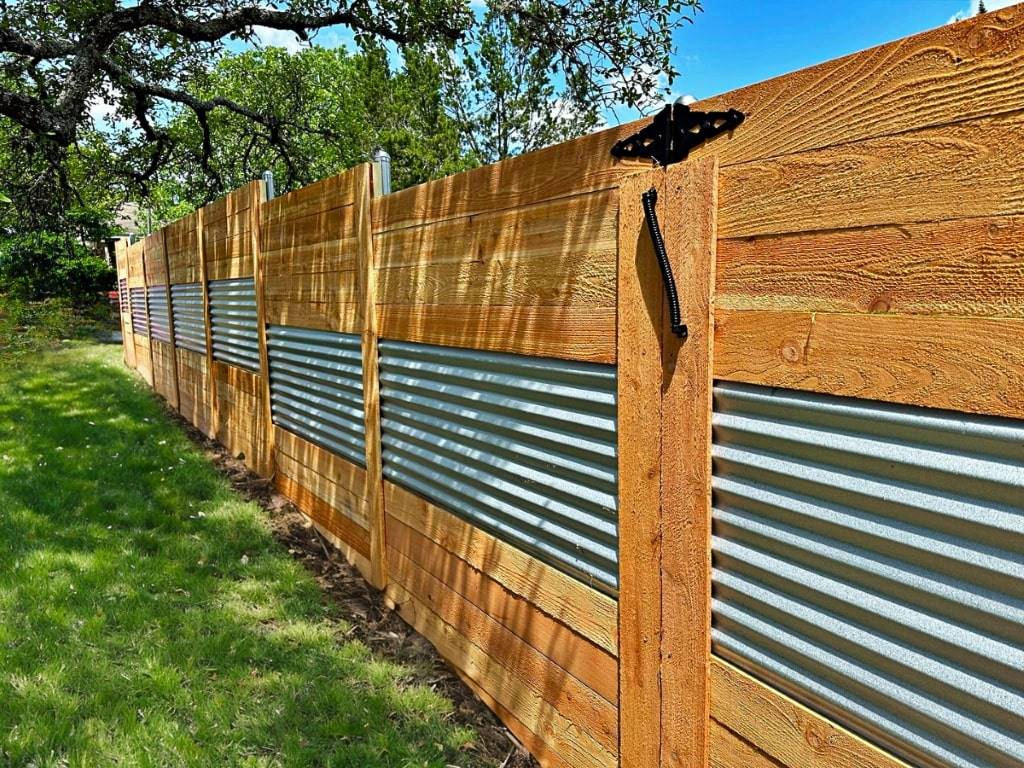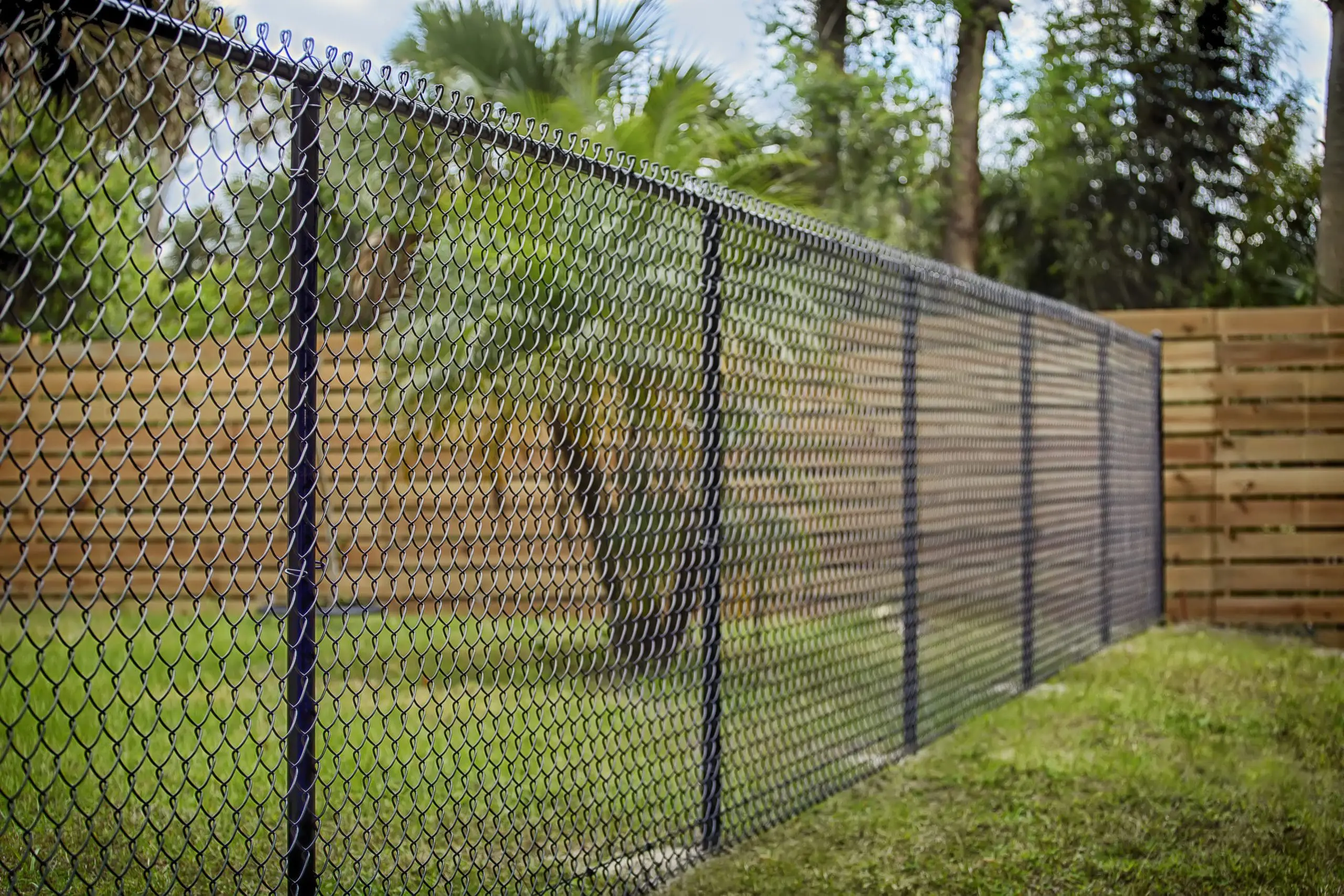Budget-Friendly Solutions for Reliable Fence Repair
Wiki Article
Just How to Recognize Typical Issues That Call For Immediate Fencing Repair Service
When it concerns maintaining your fencing, it is important to detect issues before they come to be bigger issues. Regularly examining for indications of decaying timber, leaning panels, or rust can conserve you time and cash in the lengthy run. You may not realize exactly how weather condition and insects can endanger your fencing's honesty. Allow's check out the common indications that indicate your fencing needs instant focus, so you can keep your home protected and looking its ideal.Indications of Rotting Wood in Wooden Fences
Have you seen your wood fence looking a bit shabby? If so, it may be time to examine for indicators of decaying wood. Initially, examine the base of the blog posts and panels for soft places. That's a clear indicator of rot if you push on the timber and it feels spongy or collapses. Next, search for discoloration or dark places on the wood-- these typically signal moisture damage. Take notice of any kind of peeling paint or coating, as this can expose the timber to more decay. In addition, a poignant, mildewy scent can suggest fungal development. Don't fail to remember to inspect joints and connections; if they hang or breaking down, the timber beneath is most likely jeopardized. By catching these indicators early, you can protect against much more considerable damage and keep your fencing standing solid. Normal maintenance is essential to extending the life of your wooden fence.Leaning or Tilting Fencing Panels
It's important to understand what created it if you have actually seen your fence panels leaning or turning. This concern might show underlying structural damage that requires your focus. Let's check out the typical reasons and the fixing choices readily available to get your fencing back in shape.
Causes of Leaning Panels
It's frequently an indication of underlying concerns that require dealing with when you notice your fence panels leaning or tilting. One usual reason is insufficient drain; too much water can erode the soil around the fencing posts, weakening their assistance. Another culprit can be solid winds or storms that push against the panels, specifically if they're not appropriately secured. In addition, the all-natural settling of soil gradually can trigger posts to move, leading to a tilt. Pests, like termites, can endanger the integrity of wood panels, creating them to lean. Ultimately, inadequate setup techniques may result in panels not being securely set, leaving them at risk to leaning under pressure. Address these concerns without delay to maintain your fencing's stability.
Indicators of Architectural Damages
Seeing turning or leaning fence panels can be worrying, as these problems usually indicate architectural damage that needs instant interest. When your fencing starts to lean, it might indicate that the articles are changing or that the soil around them has actually worn down. Pay very close attention to voids in between panels or blog posts, as these can additionally suggest instability. deck builder. Furthermore, look for fractures or splintering in the wood, which can deteriorate the overall framework. If you notice corrosion or deterioration on metal components, it can endanger the integrity of the fence. Remember, overlooking these indicators can bring about more severe damage down the line, so it's essential to analyze the situation without delay and act prior to it intensifiesRepair Options Available

Rust and Deterioration in Steel Fences
If you possess a steel fence, you could discover rust and deterioration sneaking in gradually, especially if it's revealed to dampness. These concerns not just impact the look of your fence yet can also endanger its structural integrity. To recognize corrosion, look for reddish-brown spots or patches, which indicate the steel is oxidizing. Deterioration can spread out rapidly if left neglected, compromising the fencing and leading to expensive repairs.To deal with rust and corrosion, you should clean up the impacted areas with a wire brush and apply a rust-inhibiting primer. When the primer dries out, think about repainting the fence with a weather-resistant paint to safeguard it even more. Routine maintenance, such as examining click here for signs of rust and retouching paint as needed, will assist expand your fence's life expectancy. Addressing these concerns promptly ensures your metal fencing continues to be solid and visually appealing for many years to find.Fractures and Divides in Vinyl Secure Fencing

Reasons of Vinyl Damages
Vinyl fencing is popular for its toughness, yet it can still struggle with fractures and divides as a result of different elements. One major reason is extreme temperature level variations. It can deteriorate the product over time when vinyl expands in the warm and agreements in the cold. Furthermore, direct exposure to severe sunlight can cause UV deterioration, making the vinyl breakable. Physical effects, like unexpected accidents or hefty branches, can additionally create cracks. Poor setup or making use of low-grade materials can aggravate these issues. Age plays a function; older plastic fence is a lot more prone to damages. Normal examinations can help you identify these variables prior to they result in considerable troubles. Take aggressive measures to ensure your fence continues to be solid and undamaged.Fixing Cracks Successfully
Although fractures and splits in your vinyl fence can be worrying, addressing them quickly can protect against more damage and preserve the fence's appearance. First, evaluate the dimension of the crack. For tiny cracks, a vinyl repair kit usually includes glue that can bond the edges, giving a seamless repair. Clean the area thoroughly before using the sticky, guaranteeing it sticks appropriately. For larger splits, you could require to make use of a plastic patch. Cut the patch to size, apply glue around the edges, and press it securely onto the split. Allow it to treat as per the manufacturer's guidelines. Normal upkeep and fast repairs can prolong your fencing's lifespan, maintaining it looking great for many years to find.Loosened or Missing Fence Messages
Loose or missing fencing articles can threaten the stability of your entire fence framework. If you see any messages tottering or leaning, it's important to attend to the concern instantly. Look for any type of signs of motion, as this can cause more damages over time. You can conveniently analyze the problem by providing each blog post a gentle shake-- if it feels unstable, it's time to take action.For missing posts, you'll need to change them as quickly as feasible to preserve your fence's integrity. Make sure they're safely anchored in the ground with concrete or gravel for added stability when you set up new posts. If an article hangs, tighten it by including additional assistance or driving it deeper right into the ground.Ignoring these problems can lead to larger problems, like spaces in your fence or even full collapse. Maintain an eye on your blog posts and remain aggressive about repair services!Damage From Weather Condition and Natural Elements
Weather and natural components can create chaos on your fence, causing different types of damages that require timely focus. Heavy rain can create timber to rot, making it weak and unpredictable. Snow build-up might bend or damage panels, while solid winds can root out fencing messages or cause areas to lean.If you see fractures or splintering in wood fences, it suggests drying due to intense sunlight direct exposure. Metal fencings can corrosion if protective coverings put on off, especially in seaside or damp areas.Inspect your fencing routinely after storms or extreme weather condition to capture any kind of damages early. Addressing these issues swiftly can save you from costly repairs down the line. Don't wait till a little issue becomes a major one; remain positive and keep your fence top shape to maintain both functionality and visual allure.Insect Problem and Termite Damage
When you see indications of bug invasion or termite damages, it's important to act swiftly to prevent additional damage. Seek mud tubes along your fencing or hollow-sounding wood, as these show termites go to job. You might also see small holes or frass, which is termite droppings resembling sawdust. If you identify any one of these indications, it's time to assess the damage.Don' t delay until it's too late; bugs can endanger your fence's honesty. Check the surrounding location for beetles or ants, as they may be adding to the issue. If you suspect an infestation, consider contacting a pest control specialist to treat the issue.repairing and confirm or replacing affected sections of your fencing immediately not only recovers its strength however likewise protects against insects from spreading further. Keep watchful to maintain your property pest-free and safe and secure.Frequently Asked Inquiries
Just how Often Should I Examine My Fencing for Damages?
You should inspect your fencing a minimum of two times a year, ideally throughout springtime and autumn. Regular checks aid you find damage early, conserving you time and cash on repairs while preserving your residential or commercial property's look and safety and security.Can I Fix a Fencing Myself or Employ an Expert?
If you have the right devices and skills, you can absolutely fix a fence on your own. Working with a professional warranties high quality work and saves you time, specifically for intricate fixings or extensive damages.What Devices Are Required for Standard Fencing Fixings?
For standard fence repairs, you'll need devices like a hammer, screwdriver, pliers, a saw, a level, and determining tape. deck builder. Depending on the repair service, you could likewise call for nails, screws, or replacement boardsHow Much Does Fencing Repair Service Typically Expense?
Fencing repair costs differ commonly, but you can expect to pay between $200 and $1,500 depending on materials, labor, and level of damage. It's wise to obtain numerous quotes for the very best bargain.
When Is the most effective Season for Fence Services?
The ideal time for fencing repair work is throughout mild climate, usually in springtime or early loss. You'll avoid severe temperature levels, making it simpler to function and guaranteeing the products set correctly for lasting toughness (deck builder). Discovering leaning or tilting fencing panels can be alarming, as these problems frequently show structural damage that requires instant interest. Loose or missing fencing posts can threaten the security of your entire fence framework. Snow accumulation might flex or break panels, while strong winds can root out fencing articles or create sections to lean.If you discover cracks or splintering in wood fences, it's a sign of drying out due to intense sunlight exposure. Steel fencings can corrosion if protective layers wear off, specifically in seaside or damp areas.Inspect your fence regularly after storms or extreme climate to catch any damages early. Fence fixing expenses vary extensively, but you can expect to pay between $200 and $1,500 depending on products, labor, and level of damagesReport this wiki page